US Political Parties
| Party |
Official 2020 nominee |
Year Founded |
2016 Candidate
Number of Votes
% of Votes |
Party Logo |
| Constitution Party |
To be determined |
1992 |
Darrell Castle
203,010
0.15% |
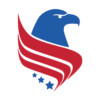 |
| Democratic Party |
To be determined |
1792 |
Hillary Clinton
65,853,516
48.18% |
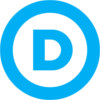 |
| Green Party |
To be determined |
1996 |
Jill Stein
1,457,216
1.07% |
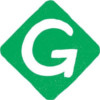 |
| Libertarian Party |
Jo Jorgensen
VP: Spike Cohen |
1971 |
Gary Johnson
4,489,221
3.28% |
 |
| Republican Party |
To be determined |
1854 |
Donald Trump
62,984,825
46.09% |
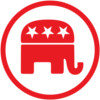 |
| Source: FEC, "Official 2016 Presidential General Election Results," fec.gov, Jan. 30, 2017 |
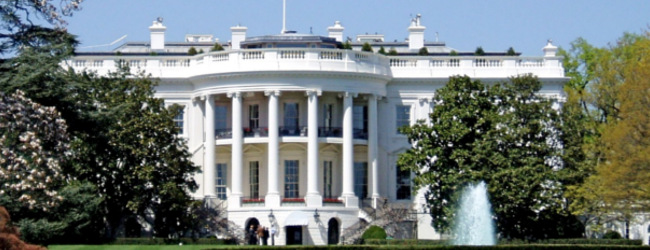
|
|
Background of Political Parties in the United States |
"Political parties are groups of individuals organized for the purpose of electing candidates to public office. The Constitution contains no mention of parties and the Framers regarded them as undesirable or even dangerous. Nonetheless, the federal structure and electoral institutions they created give ample incentives for party building.
The first American parties formed during the first few decades of the Republic as congressional members attempted to build stable coalitions to control the machinery of government. These attempts quickly spilled over into the electoral arena. With the plurality voting rule penalizing all but a few serious candidates for each office, the two-party pattern of electoral competition quickly emerged."
Source: Samuel Kernell, Gary C. Jacobson, and Thad Kousser, "The Logic of American Politics: Ch. 12. Political Parties," college.cqpress.com (accessed Oct. 30, 2015)
Political party committees are required to register with the Federal Election Commission (FEC) when they reach certain thresholds for spending or contributions. According to the FEC: "The Commission determines whether committees meet the criteria for state or national party committee status through the advisory opinion process. For state committee status, the Commission has generally looked to see if the committee engages in activities that are commensurate with the day-to-day operations of a party at the state level, and if the committee has gained ballot access for its federal candidates. For national committee status, the criteria include:
- Nominating qualified candidates for President and various Congressional offices in numerous states;
- Engaging in certain activities--such as voter registration and get-out-the-vote drives--on an ongoing basis;
- Publicizing the party's supporters and primary issues throughout the nation;
- Holding a national convention;
- Setting up a national office; and
- Establishing state affiliates."
Source: Federal Elections Commission (FEC), "Quick Answers to Party Questions," fec.gov (accessed Oct. 30, 2015) |
|
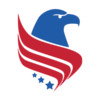
Constitution Party |
|
|
|
| "The mission of the Constitution Party is to secure the blessings of liberty to ourselves and our posterity through the election, at all levels of government, of Constitution Party candidates who will uphold the principles of the Declaration of Independence, the Constitution of the United States, and the Bill of Rights. It is our goal to limit the federal government to its delegated, enumerated, Constitutional functions." |
Source: Constitution Party, "Mission Statement," constitutionparty.com (accessed June 11, 2019) |
| Contact Information |
|
|

Democratic Party
|
|
|
|
"Since 1848, the Democratic National Committee has been the home of the Democratic Party, the oldest continuing party in the United States.
Today we are millions of supporters strong, fighting for progress and helping elect Democrats across the country to state government, Congress, and the White House.
There are several core beliefs that tie our party together: Democrats believe that we’re greater together than we are on our own — that this country succeeds when everyone gets a fair shot, everyone does their fair share, and everyone plays by the same rules. Our party is focused on building an economy that lifts up all Americans, not just those at the top.
That’s why Democrats are working to make progress on issues like job creation, equal pay, education, health care, and clean energy."
Today we are million |
|
Source: Democrats, "Our Party," democrats.org (accessed June 11, 2019) |
| Contact Information |
|
|

Green Party
|
|
|
|
"We are grassroots activists, environmentalists, advocates for social justice, nonviolent resisters and regular citizens who’ve had enough of corporate-dominated politics. Government must be part of the solution, but when it’s controlled by the 1%, it’s part of the problem. The longer we wait for change, the harder it gets. Don’t stay home on election day. Vote Green.
Everything we do is based on our four pillars: peace, ecology, social justice, [and] democracy." |
| Source: Green Party, Homepage, gp.org (accessed June 11, 2019) |
| Contact Information |
|
|

Libertarian Party
|
|
|
|
"The Libertarian Party (LP) is your representative in American politics. It is the only political organization which respects you as a unique and responsible individual.
Our slogan is that we are 'The Party of Principle', because we stand firmly on our principles.
Libertarians strongly oppose any government interference into their personal, family, and business decisions. Essentially, we believe all Americans should be free to live their lives and pursue their interests as they see fit as long as they do no harm to another.
Founded in 1971, we run many hundreds of candidates every election cycle. These candidates seek positions ranging from City Council to President of the United States. Each of these candidates helps to give liberty a voice." |
| Source: Libertarian Party, "About the Libertarian Party," lp.org (accessed June 11, 2019) |
| Contact Information |
|
|

Republican Party
|
|
|
|
| "We believe in American exceptionalism... We affirm — as did the Declaration of Independence: that all are created equal, endowed by their Creator with inalienable rights of life, liberty, and the pursuit of happiness... We believe the Constitution was written not as a flexible document, but as our enduring covenant... When political freedom and economic freedom are separated — both are in peril; when united, they are invincible. We believe that people are the ultimate resource — and that the people, not the government, are the best stewards of our country’s God-given natural resources. As Americans and as Republicans we wish for peace — so we insist on strength. We will make America safe. We seek friendship with all peoples and all nations, but we recognize and are prepared to deal with evil in the world." |
| Source: GOP, "Republican Platform Preamble," gop.com, 2016 |
| Contact Information |
|
|
Historical Political Parties in the US |
| 1789 - Democratic-Republican Party |
"[Thomas] Jefferson's supporters, deeply influenced by the ideals of the French Revolution (1789), first adopted the name Republican to emphasize their antimonarchical views. The Republicans contended that the Federalists harbored aristocratic attitudes and that their policies placed too much power in the central government and tended to benefit the affluent at the expense of the common man. Although the Federalists soon branded Jefferson's followers 'Democratic-Republicans,' attempting to link them with the excesses of the French Revolution, the Republicans officially adopted the derisive label in 1798...
Notwithstanding the party's anti-elitist foundations, the first three Democratic-Republican presidents—Jefferson (1801–09), James Madison (1809–17), and James Monroe (1817–25)—were all wealthy, aristocratic Southern planters." |
| Source: Encyclopedia Britannica, "Democratic-Republican Party," britannica.com (accessed Oct. 30, 2015) |
| 1795 – Federalist Party |
"Federalism was born in 1787, when Alexander Hamilton, John Jay, and James Madison wrote 85 essays collectively known as the Federalist papers. These eloquent political documents encouraged Americans to adopt the newly-written Constitution and its stronger central government.
Largely influenced by the ideas of Alexander Hamilton, the Federalists succeeded in convincing the Washington administration to assume national and state debts, pass tax laws, and create a central bank...
Anti-Federalists [Democratic-Republicans] such as Thomas Jefferson feared that a concentration of central authority might lead to a loss of individual and states' rights. They resented Federalist monetary policies, which they believed gave advantages to the upper class. In foreign policy, the Republicans leaned toward France, which had supported the American cause during the Revolution.
Jefferson and his colleagues formed the Republican Party in the early 1790s. By 1795, the Federalists had become a party in name as well." |
| Source: PBS' American Experience, "The Federalist Party," www.pbs.org (accessed Oct. 30, 2015) |
| 1825 - National Republican Party |
"U.S. political party formed after what had been the Republican (or Jeffersonian Republican) party split in 1825. The Jeffersonian Republicans had been the only national political party following the demise of the Federalists during the War of 1812. During the contested election of 1824, followers of Henry Clay and John Quincy Adams began calling themselves National Republicans, while backers of Andrew Jackson emerged as Democratic Republicans.
By the election of 1828, the Jacksonians were simply called Democrats, though the name was not formalized until later. Opponents of Jackson joined the National Republican coalition and nominated Adams for a second term. Adams lost, but the National Republicans grew stronger. In 1831 they nominated Henry Clay to run on a platform endorsing the tariff, internal improvements, and the Bank of the United States.
Jackson and the Democrats won an overwhelming victory in the election of 1832, and the National Republicans never nominated another presidential candidate. During Jackson's second administration, the National Republicans joined with northern and southern conservatives, supporters of the Bank of the United States, and other anti-Jackson groups to form a new coalition. Claiming Jackson governed as 'King Andrew I,' the new party called itself the Whigs—after the British party that had opposed the power of the monarchy. By about 1834, there was little trace of the National Republican Party." |
| Source: Encyclopedia Britannica, "National Republican Party,” www.britannica.com (accessed Oct. 30, 2015) |
| 1834 - Whig Party |
"The Whig party was formed in 1834 as a coalition of National Republicans, Anti-Masons, and disgruntled Democrats, who were united by their hatred of 'King Andrew' Jackson and his 'usurpations' of congressional and judicial authority... The party took its name from the seventeenth-century British Whig group that had defended English liberties against the usurpations of pro-Catholic Stuart Kings.
In 1836 the Whigs mounted their first presidential campaign, running three regional candidates against Martin Van Buren: Daniel Webster, the senator from Massachusetts who had substantial appeal in New England; Hugh Lawson White, who had appeal in the South; and William Henry Harrison, who fought an Indian alliance at the Battle of Tippecanoe and appealed to the West and to Anti-Masons in Pennsylvania and Vermont. The party strategy was to throw the election into the House of Representatives, where the Whigs would unite behind a single candidate. Van Buren easily defeated all his Whig opponents, winning 170 electoral votes to just 73 for his closest rival.
Following his strong showing in the election of 1836, William Henry Harrison received the united support of the Whig party in 1840... Harrison easily defeated Van Buren by a vote of 234 to 60 in the electoral college.
Unfortunately, the 68-year-old Harrison caught cold while delivering a two-hour inaugural address in the freezing rain. Barely a month later, he died of pneumonia, and became the first president to die in office. His successor, John Tyler of Virginia, was an ardent defender of slavery, a staunch advocate of states’ rights, and a former Democrat, whom the Whigs had nominated in order to attract Democratic support to the Whig ticket...
In 1848 and 1852 the Whigs tried to repeat their successful 1840 presidential campaign by nominating military heroes for the presidency. The party won the 1848 election with General Zachary Taylor, an Indian fighter and hero of the Mexican War, who had boasted that he had never cast a vote in a presidential election. Like Harrison, Taylor confined his campaign speeches to uncontroversial platitudes. 'Old Rough and Ready,' as he was known, died after just 1 year and 127 days in office. Then, in 1852, the Whigs nominated another Indian fighter and Mexican War hero, General Winfield Scott, who carried just four states for his dying party. 'Old Fuss and Feathers,' as he was called, was the last Whig nominee to play an important role in a presidential election." |
| Source: Digital History, "The Whigs," www.digitalhistory.uh.edu (accessed Oct. 30, 2015) |
| 1848 - Free Soil Party |
"In 1848, antislavery Democrats and Conscience Whigs (in contrast to Cotton Whigs) merged with the Liberty party to form the Free Soil Party. Unlike the Liberty Party, which was dedicated to slavery's abolition and equal rights for blacks, the Free Soil party narrowed its demands to the abolition of slavery in the District of Columbia and exclusion of slavery from the federal territories. The Free Soilers also wanted a homestead law to provide free land for western settlers, high tariffs to protect American industry, and federally-sponsored internal improvements.
The Free Soil Party nominated Martin Van Buren as its presidential candidate... In the election of 1848, Van Buren polled 291,000 votes, enough to split the Democratic vote and throw the election to the Whig candidate Zachary Taylor." |
| Source: Digital History, "The Free Soil Party," www.digitalhistory.ud.edu (accessed Oct. 30, 2015) |
| 1859 - Constitutional Union Party |
| "U.S. political party that sought in the pre-Civil War election of 1860 to rally support for the Union and the Constitution without regard to sectional issues. Formed in 1859 by former Whigs and members of the Know-Nothing Party, the party nominated John Bell for president and Edward Everett for vice president... the Constitutional Union Party was a short-lived vehicle for moderates that collapsed by the start of the Civil War. It succeeded only in helping to disperse the 1860 vote sufficiently to ensure the election of the Republican candidate, Abraham Lincoln." |
| Source: Encyclopedia Britannica, "Constitutional Union Party," britannica.com (accessed Oct. 30, 2015) |
| 1892 - Populist Party |
"Throughout the 1880s local political action groups known as Farmers' Alliances sprang up among Middle Westerners and Southerners, who were discontented because of crop failures, falling prices, and poor marketing and credit facilities. Although it won some significant regional victories, the alliances generally proved politically ineffective on a national scale. Thus in 1892 their leaders organized the Populist, or People's, Party, and the Farmers' Alliances melted away. While trying to broaden their base to include labour and other groups, the Populists remained almost entirely agrarian-oriented. They demanded an increase in the circulating currency (to be achieved by the unlimited coinage of silver), a graduated income tax, government ownership of the railroads, a tariff for revenue only, the direct election of U.S. senators, and other measures designed to strengthen political democracy and give farmers economic parity with business and industry.
In 1892 the Populist presidential candidate, James B. Weaver, polled 22 electoral votes and more than 1,000,000 popular votes. By fusing with the Democrats in certain states, the party elected several members to Congress, three governors, and hundreds of minor officials and legislators, nearly all in the northern Middle West...
[I]n 1896 the Populists allowed themselves to be swept into the Democratic cause by their mutual preoccupation with the Free Silver Movement. The subsequent defeat of Democratic presidential candidate William Jennings Bryan signalled the collapse of one of the most challenging protest movements in the U.S. since the Civil War. Some of the Populist causes were later embraced by the Progressive Party." |
| Source: Encyclopedia Britannica, "Farmers Alliance," britannica.com (accessed Oct. 30, 2015) |
| 1912 - Progressive Party (Bull Moose Party) |
"On the evening of June 22, 1912, former President Theodore Roosevelt asked his supporters to leave the floor of the Republican National Convention in Chicago. Republican progressives reconvened in Chicago's Orchestra Hall and endorsed the formation of a national progressive party. When formally launched later that summer, the new Progressive Party chose Roosevelt as its presidential nominee. Questioned by reporters, Roosevelt said he felt as strong as a 'bull moose.' Thenceforth known as the 'Bull Moose Party,' the Progressives promised to increase federal regulation and protect the welfare of ordinary people...
Despite an impressive showing in 1912, the Bull Moose Party failed to establish itself as a viable third party. Still active on the state level, Progressives did not put forward a presidential candidate again until Wisconsin Senator Robert M. La Follette's run in 1924." |
| Source: The Library of Congress, "Bull Moose Born," memory.loc.gov (accessed Oct. 30, 2015) |
|
|
RECOMMENDED to you...
|
|
1
|
|
2
|
|
3
|
|
4
|
|
5
|
|
6
|
|
7
|
|
8
|
|
9
|
|
10
|
|
11
|
|
12
|
|
13
|
|
14
|
|
15
|
|
|
|

CITE THIS PAGE
Who is the author?
|
|
SHARE
|
|